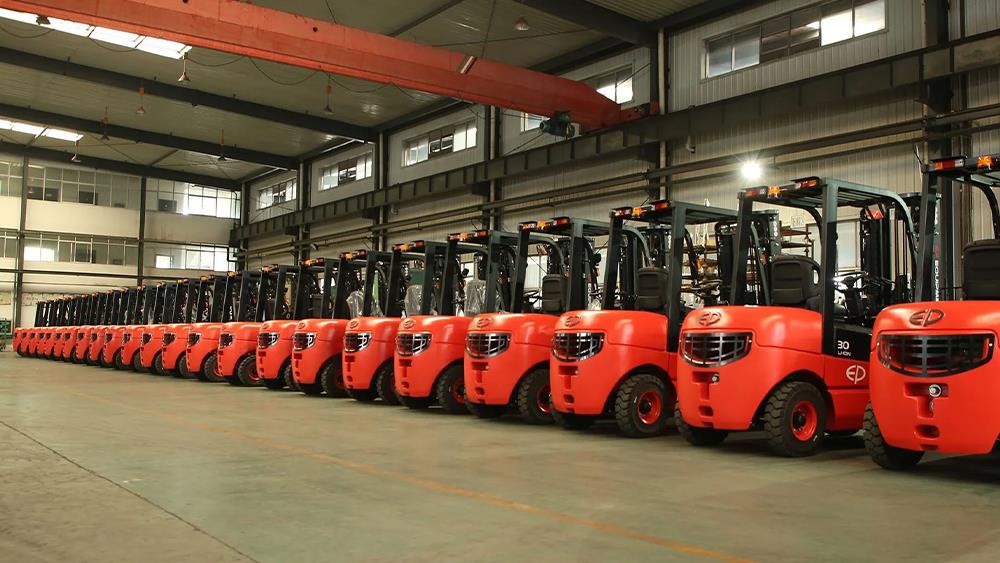

Electric forklift specialist, iLift, highlights five key strategies to help construction businesses ride out the turbulent economic storm.
Construction companies are feeling the squeeze in 2024. Rising material costs, skill shortages, and ultra-competitive pricing are among the biggest challenges facing the industry.
Such are the financial pressures in construction that UK building firms experienced an alarming 35% increase in insolvencies in 2023, the majority being specialised construction companies and general building firms.
To help construction companies future-proof their business and become more resilient to modern-day challenges, we are highlighting five key strategies to help them ride out construction’s turbulent economic storm.
1. Invest in cost-effective equipment
UK construction has been hit particularly hard by spiralling energy prices, with the industrial sector experiencing a staggering 45% increase in electricity costs and a 32% hike in overall fuel prices during 2023.
To reduce the impact of these mammoth energy increases, many construction companies are investing in cost-effective technology, that is cheaper to operate.
For instance, electric forklifts have lower operating and maintenance costs than traditional models powered by polluting combustion engines, thus delivering significant financial savings.
Similarly, businesses can sell off any surplus equipment or unused machinery to create additional revenue that could be reinvested into other areas such as the adoption of automated technology to streamline processes and improve productivity.
2. Embrace sustainability
A report from the Environmental Audit Committee showed the built environment makes up 25% of the UK’s greenhouse gas emissions. Therefore, building firms are moving away from traditional construction methods and are embracing modern, sustainable solutions supported by green technology like electric forklifts that align with the government’s Net Zero target.
Sustainable building also makes economic sense for construction companies as it produces less waste than traditional methods, uses renewable resources, and even attracts new eco-conscious customers.
For example, building with timber has become a popular solution, and 75% of new housing in Scotland uses timber frame construction, with around 23% in England.
Not only is this more sustainable than brick-and-block, but there’s less reliance on traditional trades, and homes can be completed more quickly, thus reducing labour and material costs.
3. Focus on technology
When it comes to embracing technology, construction has often struggled to keep pace with other industries. However, all that is changing as more and more building firms focus on new ways to improve productivity and future-proof themselves.
Site managers, engineers, and designers are turning to digital tools such as construction ERPs, project management tools, and building information modelling to support on-site teams and return better results in a more sustainable way.
Not only that, but many construction technology solutions are customisable, allowing leaders to closely monitor the health and output of their employees, track materials and supply chains, and focus on productivity to improve their bottom line.
4. Explore prefab and modular solutions
Prefabrication is nothing new, but it is starting to make a greater impact in construction than ever before due to the numerous benefits it brings over traditional building methods.
For building firms looking to future-proof their business and promote a sustainable future, prefab and modular construction are becoming an increasingly popular choice. Prefab construction can drastically reduce build times and reduce labour costs and waste as the materials and structures used are made off-site where production isn’t affected by bad weather.
Prefab and modular solutions including timber-frame options also provide greater flexibility in design as well as superior insulation and energy efficiency over standard brick-and-block methods.
Therefore, it’s hardly surprising that prefab is seen as a cost-effective, sustainable option for a variety of new buildings from schools and offices to apartment blocks and public facilities.
5. Go electric
At a time when all industries are under pressure to lower their carbon footprint, construction companies can become more eco-friendly by using modern equipment such as electric forklifts in the workplace. They provide a practical alternative to polluting, combustion engine machines and also help firms reduce their environmental impact.
Unlike machines that run on fossil fuels, electric forklift trucks produce zero emissions for better air quality and are more energy efficient leading to significant cost savings over time.
Additionally, electric forklifts are quieter to operate than noisy combustion alternatives, require less maintenance and servicing due to a reduction in moving parts, and can even be powered by renewable energy sources such as solar or wind to enhance a company’s commitment to sustainability.
While many construction companies are feeling the pinch in 2024, these five simple tips can help firms future-proof themselves for the challenges ahead by improving productivity, reducing waste, and embracing sustainability.
From investing in cost-effective equipment to adopting electric forklifts and greener machinery, the construction industry is adapting to cope with the industry’s current economic and environmental challenges.